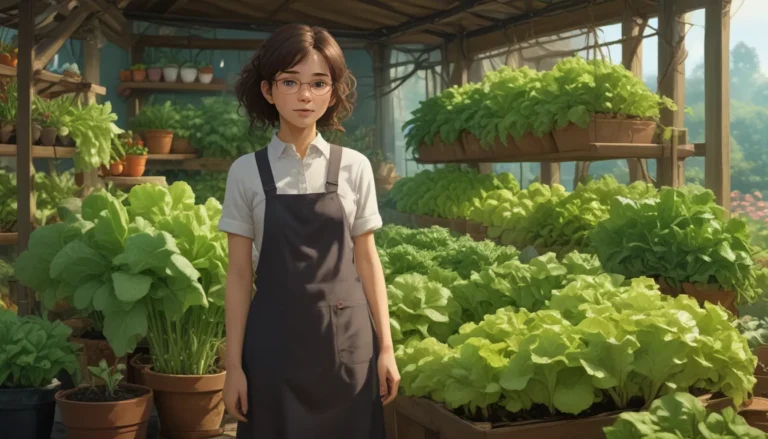Comprehensive Guide to Planting and Growing Common Sage

Salvia officinalis
If you’re looking to enhance your culinary and gardening skills, growing common sage, also known as Salvia officinalis, could be just the right herb for you. This Mediterranean herb belongs to the mint family and is a perennial plant that thrives in USDA Hardiness Zones 4 to 8. With aromatic greyish-green leaves and lavender flowers, this plant can be an aesthetic addition to your garden.
In this detailed guide, we will explore all the essential aspects of cultivating common sage in your garden, from its rich history to tips on propagation, growing, harvesting, and even cooking with this versatile herb.
Understanding Common Sage: Cultivation and History
Cultivation
Before delving into the details about growing common sage, it’s essential to understand its diverse cultivars and the significance of this ancient herb. Salvia, the genus name, originates from the Latin word “to save,” highlighting the plant’s healing properties. “Officinalis” points to its historical role as a healing herb in the Mediterranean region and beyond.
This aromatic herb has been valued for centuries for its culinary, medicinal, and ornamental uses. Today, the leaves are a popular ingredient in various dishes around the world, while the vibrant flowers attract beneficial insects.
History
Common sage has been cherished since the Middle Ages, revered by herbalists, cooks, and religious practitioners. Its rich history as a sacred plant with healing properties has led to its widespread cultivation globally. Whether used in holiday recipes or grown for its ornamental value, common sage has made its mark in diverse cultures across the globe.
Propagating Common Sage: From Seeds to Cuttings
From Seed
If you plan to start growing common sage from seed, you can sow them indoors before the last frost date or directly outdoors after the threat of frost has passed. Ensure you adjust the planting depth and provide adequate moisture for successful germination.
From Stem Cuttings
Another propagation method involves using stem cuttings, allowing you to create new plants easily. By following simple steps such as using rooting hormone and providing the right environment, you can successfully propagate common sage through cuttings.
By Division
Dividing perennial sage plants in early spring can help you expand your garden and maintain the health of existing plants. With proper techniques, such as dividing the roots carefully, you can create new plants efficiently.
Growing Common Sage: Tips and Tricks
To ensure the optimal growth of common sage in your garden, it’s essential to provide the right conditions. This includes:
- Planting in full sun
- Ensuring well-draining soil
- Adequate spacing between plants
- Avoiding overwatering
- Using suitable companion plants
- Regular pruning to maintain plant health
By following these simple tips and tricks, you can enjoy a bountiful harvest of flavorful sage leaves throughout the growing season.
Choosing Common Sage Cultivars: Varieties to Explore
As you venture into growing common sage, you have the option to select from various cultivars that offer unique characteristics. Whether you prefer traditional grey-green leaves or vibrant purple and variegated varieties, there’s a cultivar to suit every preference.
Some popular common sage cultivars include:
- Aurea
- Berggarten
- Icterina
- Purpurascens
- Tricolor
Each cultivar presents distinctive features, from leaf colors to flower shapes, adding visual interest to your garden.
Managing Pests and Disease: Protecting Your Sage Plants
While common sage is relatively resistant to pests and diseases, it’s essential to maintain optimal growing conditions to prevent issues. By ensuring proper sun exposure, watering practices, and soil drainage, you can minimize the risk of common problems such as aphids, mealybugs, and fungal infections.
Harvesting and Preserving Sage: Tips for Fresh Flavors
As your common sage plants mature, you can start harvesting leaves, stems, and flowers for culinary use. Whether you prefer fresh sage in cooking or dried leaves for long-term storage, there are various preservation methods to explore. From air-drying to using a dehydrator, you can enjoy the flavors of sage year-round.
Cooking with Common Sage: Delicious Recipes to Try
Once you have harvested fresh sage from your garden, it’s time to explore culinary delights with this versatile herb. From savory potato dishes to flavorful roasted vegetables, the possibilities are endless. Whether you’re a seasoned chef or a cooking enthusiast, incorporating sage into your recipes can add a unique twist to your meals.
Quick Reference Growing Guide: Key Points to Remember
To simplify your common sage growing journey, here’s a quick reference guide outlining essential information such as plant type, hardiness zones, preferred soil conditions, and companion planting tips. By referring to this guide, you can ensure that your sage plants thrive throughout the growing season.
Sage Rocks: Embracing the Heritage of Sage
Common sage holds a special place in culinary and cultural traditions, symbolizing healing, purification, and culinary excellence. Whether you’re planting sage for its historical significance or culinary appeal, the journey of growing this ancient herb is enriching and rewarding.
As you embark on your sage-growing adventure, remember to cultivate an appreciation for the rich heritage and culinary legacy of this versatile herb.
Are you ready to plant common sage in your garden? Share your experiences and tips in the comments below!
- Do you want to explore more herbs in your garden? Check out our guides:
- How to Grow Oregano
- How to Grow Basil
- How to Grow Mint in Your Garden
By incorporating detailed information on cultivation, propagation, growing tips, cultivars, pest management, harvesting, cooking, and quick reference guides, this enhanced article offers readers a comprehensive and engaging resource on planting and growing common sage. Whether you’re a novice gardener or a seasoned herbalist, there’s something valuable for everyone to learn and explore in the world of common sage cultivation. Happy planting!





